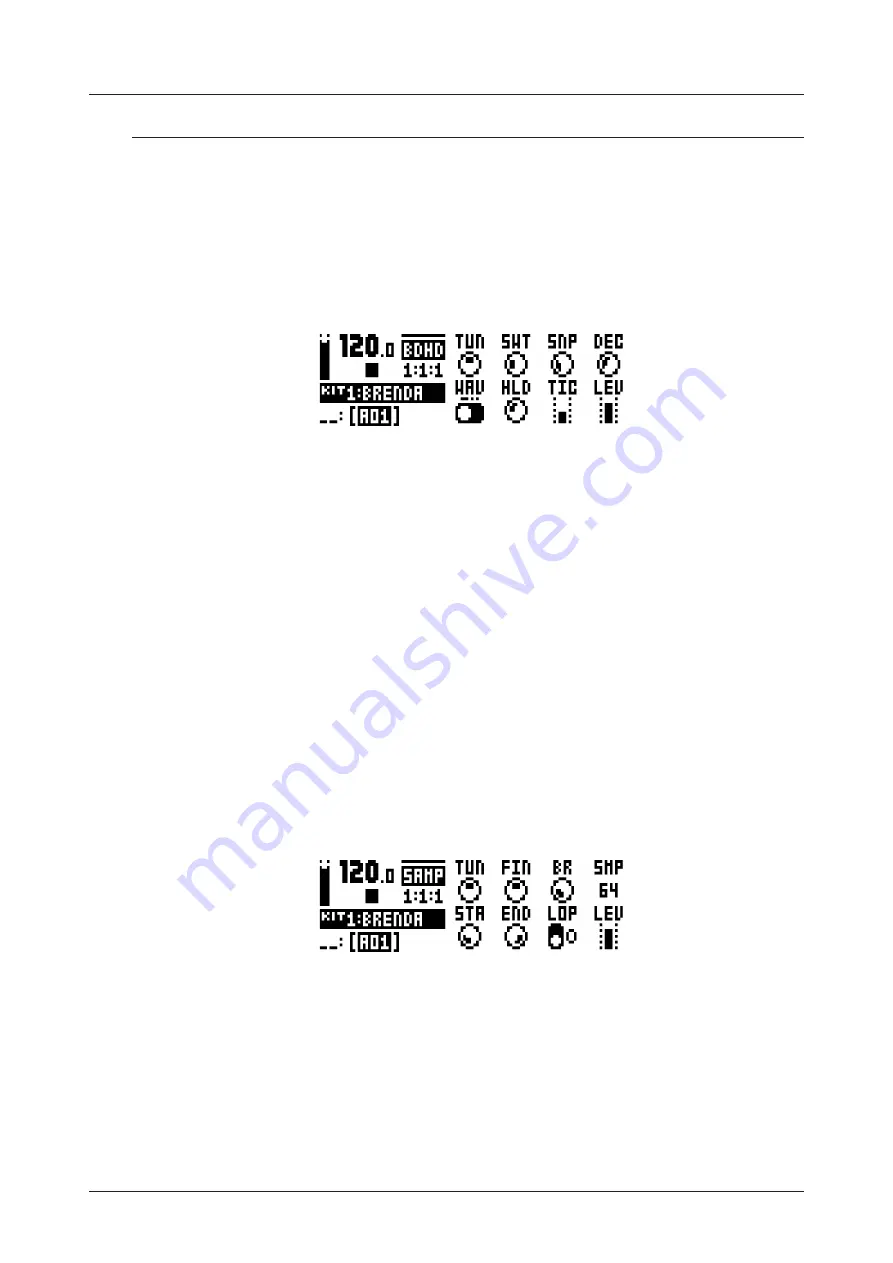
APPENDIX A: DRUM TRACK PARAMETERS
70
APPENDIX A: DRUM TRACK PARAMETERS
This appendix lists the parameters on the five PARAMETER pages for the drum tracks and explains them.
With one significant exception, each unique page contains the same parameters on all drum tracks. The
exception is the SYNTH page, where parameters will vary depending on the active MACHINE.
A.1 SYNTH
Controls the (analog and digital) sound synthesis. The default parameters for the BD track with the BDHD
machine are shown here. For the SYNTH pages of other machines, see “APPENDIX D: MACHINES” on page
86.
SYNTH (BDHD)
TUN
(Tune) sets the pitch of the voltage controlled oscillator in chromatic semitones. (-64–+63)
SWT
(Sweep Time) sets the pitch sweep time. Low values result in a short sweep, while high values
result in a long sweep. (0–127)
SNP
(Snap Amount) sets the amount of snap, an immediate pitch sweep at the start of the sound attack
phase. Use together with TIC to shape the transient sound components. (0–127)
DEC
(Decay) sets the length of the decay phase. Low values mean a steep, quick decay while high val-
ues produce a more gentle slope and a sound of longer duration. (0–127)
WAV
(Waveform) sets the voltage controlled oscillator waveform to sine, asymmetric sine or triangle. The
three waveforms, in that order, produce sounds with increasing amounts of overtone content. (0, 1 or 2).
HLD
(Hold) sets the length of the hold phase before the decay phase kicks in. Low values correspond to
short hold time, high values correspond to longer hold time. Use to shape the body of the drum sound.
(0–127)
TIC
(Tick Level) sets the level of the transient tick sound. Use together with SNP to shape the composite
transient sound. (0–127)
LEV (Level) sets the volume of the SYNTH sound. (0–127)
A.2 SAMPLE
The parameters on this page control the playback of the user samples. A project has 127 user sample slots.
Within each kit, these samples may be dynamically allocated, modulated and customized.
SAMPLE
TUN
(Tune) sets the pitch of the sample in equivalents of chromatic semitones. To move faster, press
the knob while turning it. The knob works in a bipolar fashion, with 0, north, leaving the pitch unchanged.
Range (-24–+24), equivalent to four octaves.
FIN
(Fine Tune) fine tunes the pitch of the sample. This parameter is an offset from the TUN parameter.
The knob works in a bipolar fashion. The whole range (-64–+63) spans one semitone down and one
semitone up.
BR
(Bit Reduction) increasing the value of this parameter decreases the resolution of the sample, making
it more grainy. Use when you want the sound of your drum sample to punch dirty like the sound effects of
classic coin-op fighting games. (0–127)
SMP
(Sample Slot) turn this knob to browse the list of up to 127 samples loaded into the project. Turn the








































